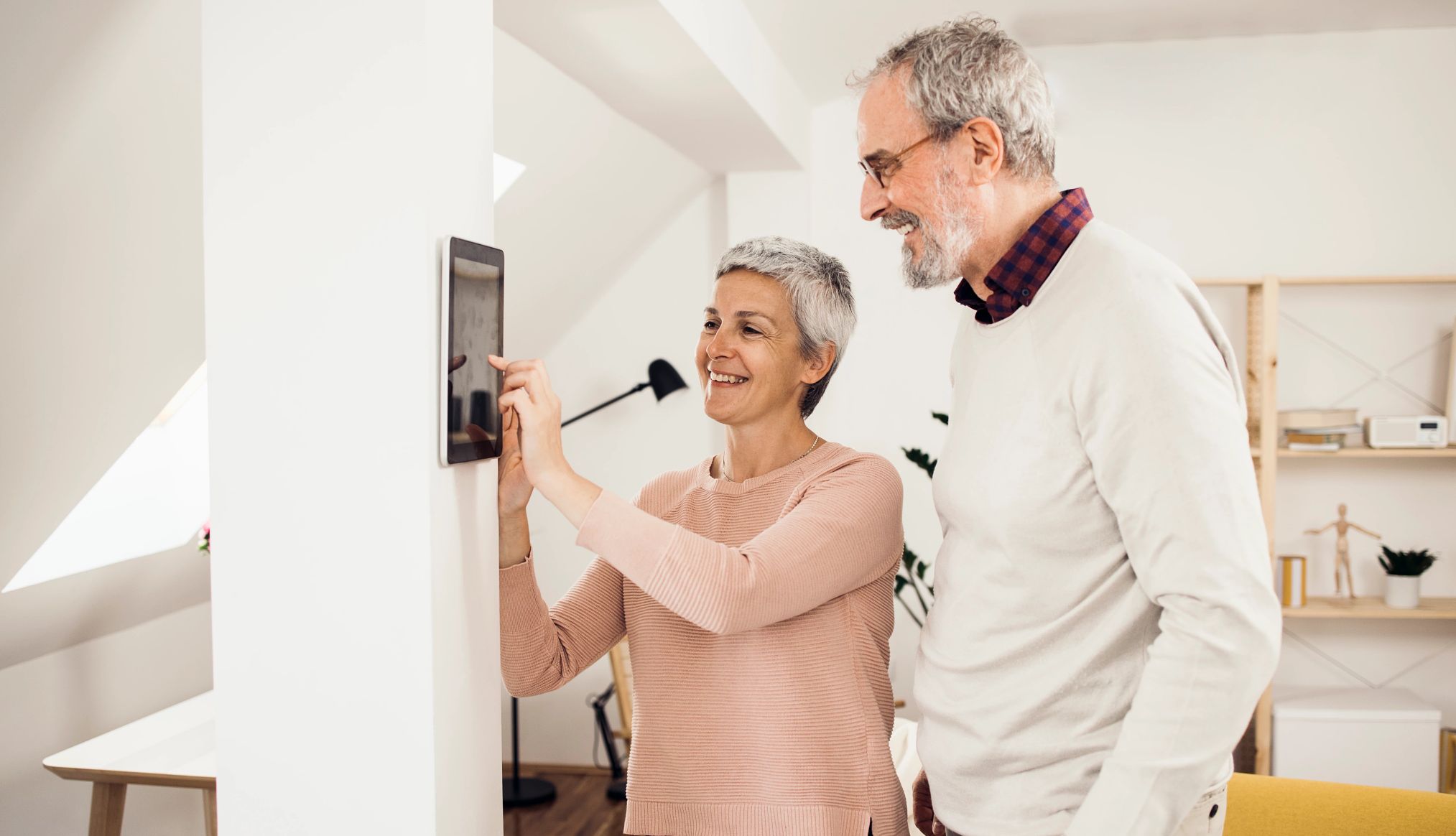
6 innovations to help people live better as they age
- Select a language for the TTS:
- UK English Female
- UK English Male
- US English Female
- US English Male
- Australian Female
- Australian Male
- Language selected: (auto detect) - EN
Play all audios:

You don’t need a headset or special glasses to check out games and other AR experiences on your smartphone. In early 2024, Apple started selling Vision Pro, a $3,499 set of MR goggles the
company is marketing as a first-of-its kind “spatial computer.” It relies on your voice, eyes and hand gestures to control whatever you are seeing in front of you, including intimate
FaceTime video calls with loved ones, who don’t need their own Vision Pro. You can also watch 3D movies and experience remarkably up close and personal encounters with dinosaurs, sharks
and artists such as Alicia Keys. The stratospheric price and the fact that you still must wear something around your face remain barriers for many older adults. Still, Apple has a strong
track record of turning slow-to-get-going items such as portable digital music players and tablet computers into mainstream products. In time, the same could happen here. Video: 3 Easy
Aging-in-Place Updates 5. SMART HOMES KEEP YOU INDEPENDENT The all-things-connected-to-the-internet smart home hasn’t always been so smart or intuitive for users because products from one
brand haven’t always played nice with products from another. Devices fall under the internet of things (IoT) rubric, and they encompass gizmos that include garage door openers, smart lights
and plugs, security cameras, speakers and televisions. IoT products can easily keep you connected to loved ones and emergency services through a smart speaker, which you may be using now.
But other devices and services are being developed to help older adults remain independent and safe yet still maintain privacy. Through an emerging global industry standard called Matter
that has support from the biggest names in tech, products from rival brands promise to work together seamlessly and securely, at least at some point. And that’s very smart indeed. 6. ROBOTS
ASSIST AROUND THE HOUSE You may have fantasized for decades about employing a humanoid robot helper such as _The Jetsons_’ maid, Rosie. But the robots most people live with nowadays more
likely resemble Roomba, the robot vacuum that iRobot launched in 2002. Models from iRobot, and others that have come since then, will mop the floor or both vacuum and mop. Self-propelled
robotic lawnmowers that follow a perimeter that you define quietly, conveniently and economically (no gas required) do the mowing for you. Emerging assistive robots from Labrador Systems, a
company in AARP’s AgeTech Collaborative portfolio, reveal other ways robots can perform household chores. These self-driving robots can be trained to make “bus stops” around the home,
perhaps by the couch or fridge, where they can retrieve food, beverages and other lightweight items and then bring them to you. The Labrador Retriever model, with a deck that lifts to
different heights, costs around $1,500, plus a monthly fee of $99 to $149. The utility of social robots remains uncertain, and no one expects them to take the place of fellow humans or even
pets. But robots such as ElliQ from Intuition Robotics are providing companionship for older adults. Meanwhile, robots tied to a smart home can provide an additional set of eyes. In
conjunction with an Alexa Together subscription, Amazon’s $1,600 Astro home-monitoring robot, billed as Alexa on wheels, can remotely care for older parents or grandparents living alone.
“When you think about aging, so much of someone staying in their home is trying to understand their behavior patterns,” says Andy Miller, AARP’s senior vice president of AARP Innovation
Labs. “If you deviate from that pattern — Did they fall? Did they not eat? Did they get hurt? I usually see somebody walk by every 47 minutes [and they didn’t] — what happened?” he says.
“The intelligence is going to far outweigh the crazy privacy, robots-taking-over concern that people are going to have.” _This story, originally published April 3, 2023, has been updated
to include fresh information about AI mental health therapy, Apple’s mixed-reality headset, cautions about the technology and developments from AARP._
